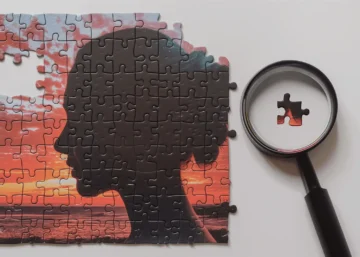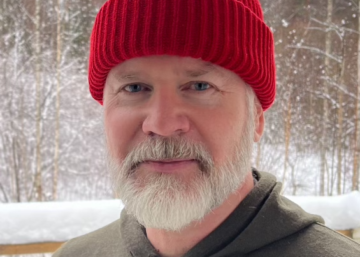As we’re closing in on the end of the year, I can’t help but to take a step back and look back at what in many ways was a year infatuated with generative ai. GenAI was all over 2023. Not only did we see ChatGPT build tremendous momentum but we also saw the competition, like Google with Gemini, get into the GenAI fray. If you allow me an oversimplification (and a flawed comparison), we can say that we began the year with one single generative ai application (ChatGPT) and that as we approach the end of the year, there are more than 10.000 listed on There’s an AI for that. There are also more than 2.000 APIs listed on There’s an API for that to help you navigate the vast AI tool space and There’s an GPT for that to help you sift through all the customized ChapGPTs now available in the ChatGPT version of the AppStore. There are also over 350k models, 75k datasets, and 150k demo apps publicly available on HuggingFace.
The proliferation of GenAI is undeniable. We now live in the aftermath of its advent.
What is less evident is what it actually means to live in the GenAI era or what it will come to mean as the technology matures and becomes all the more ubiquitous. One angle of approach to tackle this question is provided by Hollywood. The recently ended strikes by members of the Writers Guild of America and the Screen Actors Guild – American Federation of Television and Radio Artists (SAG-AFTRA) highlight the disruptive nature of GenAI. If generative AI can generate scripts, what are the screenwriters going to do for a living? And if generative AI can generate digital actors, what are the human actors going to do for a living? And not only that, if generative ai can generate scripts in the style of a successful enterprise like Marvel’s Avenger series without involving the original writers and digital replicas of a de-aged Harrison Ford portraying Indiana Jones or generate a voice indistinguishable from Johnny Cash’s sing Barbie Girl, then just who owns your style, your tone, your voice, or your face?
Murky waters…
Instinctively, I guess most of us would say: “I do! It’s my voice, my face and my style.” But is it? Or rather, where is it so? Your face is certainly your face. Seems self-evident. But a picture of your face is not your face. It’s an artifact. Your voice is your voice. But a recording of your voice is not your voice. It’s, you guessed it, an artifact. Somebody recorded your voice or snapped a picture of your face, or painted a painting in your style that you had not already painted but looks like a painting you maybe could have painted.
In the 1964 classic “Understanding Media – The Extensions of Man,” Marshall McLuhan famously stated that “the medium is the message,” which the Wikipedia pretty accurately explains in the following way: “McLuhan proposes that a communication medium itself, not the messages it carries, should be the primary focus of study. He showed that artifacts such as media affect any society by their characteristics, or content.” Again, your voice is your voice but a recording of your voice is a medium, an artifact. The way it was recorded, the technology used to capture your voice, the sound engineer in the studio all contribute to the content that is the recorded version of your voice. Not only that, the way this recording is presented and consumed will also impact the artifact as such. There is a difference between a highly compressed version of a recording and a lossless one. Remember those 128kbps MP3s some of us listened to in the late 90s? 90% loss of audio information…. And compare the experience of watching an epic movie on your 6.7 inch Iphone 14 Plus to watching the same movie on the 16K resolution wraparound LED screen, measuring 15.000 m2 in the Sphere in Las Vegas. The medium matters. The medium is the message.
The confounding factor in all of this is that today, we very much live in a world that is practically primarily digital, or digital first, if you will. Not only do we spend more and more time in front of our screens and plugged into our head-sets, we also rely all the more on digital channels to keep us socially connected as well as informed about what is happening in the (digital) world around us. This has created a situation where we conflate the material and the digital worlds and assume they operate in the same way and that we thus can enforce the same laws, regulations and morals on both. We sort of assume that we can import the structure of the material world into the digital world. But we cannot. Because they do not, in fact, operate in the same way.
The material world is a world constrained by time and space. In essence, there is neither time nor space in the digital world. In the digital world, everything is here and now. Geospatial coordinates matter very little. Of course, despite this, Hollywood has always tried to maintain geospatial relevance in digital space; think Amazon Prime’s restriction on content while outside your home country or Spotify’s geo-restrictions reflecting licensing agreements. Furthermore, this unwillingness to accept the differences between these two worlds due to the restructuring of the commercial models it necessitates is compounded by a lack of imagination; think H&M’s opening of a H&M store in the multiverse which looked, well, pretty much like an H&M store in the material world…
Also, the material world is a world of biology. There is no biology in the digital world. Biology means aging, deterioration of systems over time and eventually death and oblivion. There is no death in digital space. In fact, whereas birthing (in the sense of generating) comes easily to the digital world, dying, in the sense of deletion, is hard to come by in digital space. There is a reason why the right to be forgotten is so challenging for digital space.
In short, the digital domain is a very different beast from the material world which for obvious reasons has served as a blueprint for how to structure things. However, this traditional blueprint serves us very poorly as we now need to navigate not just a different, digital world, but a digital world which has come to dictate everything from views on how to best mitigate the spread of the Covid-19 pandemic (ref: the Covid 19 infodemic) to who actually won the US election back in 2020…. And into this world we have now coaxed generative artificial intelligence…
Looping back to the strikes in Hollywood. Whereas I sympathize with people’s concern for their livelihoods in face of disruptive technological advances, I do not see how the onslaught of generative AI can be stemmed through defense. It strikes me as futile to address generation, replication, proliferation in a digital world that never forgets and acknowledges no time and no space with brakes. It reminds me of the Metallica vs Napster feud where Metallica sued Napster for “copyright infringement, racketeering, and unlawful use of digital audio interface devices.” However it was set up in terms of morals, it was a defensive play triggered by the desire to keep the then current paradigm in place. Fast forward to today. Are things better or worse? You decide. Regardless, they are different. There are fewer physical goods shipped, there are fewer physical points of sale, those who owned the distribution channels have been replaced by those who own the social media platforms, publishing companies remain, there is a much greater proliferation of content, more people have easy access to recording equipment and digital distribution channels. GenAI will continue this reshaping of our worlds.
Ending note. In 1960s Jamaica, recording artists such as Bob Marley, Bunny Wailer and Peter Tosh who recorded in Coxsone Dodd’s famous Studio1 were paid a small sum of money per track recorded (even those they had written themselves). Period. No publishing. No royalties. Studio musicians were paid by the hour and received no credit. The studio owner made the real money. (Especially if he also had his own sound system in place and owned the labels). In comparison, as reported by Financial Times December 14, “For every dollar Spotify makes in revenue, it pays about 70 cents back out to the owners of the music on the app.” Better or worse? Regardless, different for sure.
Technology forces change and we need to change with technology if we want to stay relevant. I think we all should take a leaf out of Bob Dylan’s book and embrace his creative process, which is rife with samples and digests from songs past, yet distinctly Dylanesque, or Beastie Boys’s book for that matter who took sampling to new heights with their 1989 master piece Paul’s Boutique….
There is no going back. There is no steming the GenAI tide. Resistance is futile. The forward escape is the only way forward. It can and should certainly be regulated, but it needs to be regulated on its own terms, not on the terms set up by a world order which is “rapidly agin’”….



